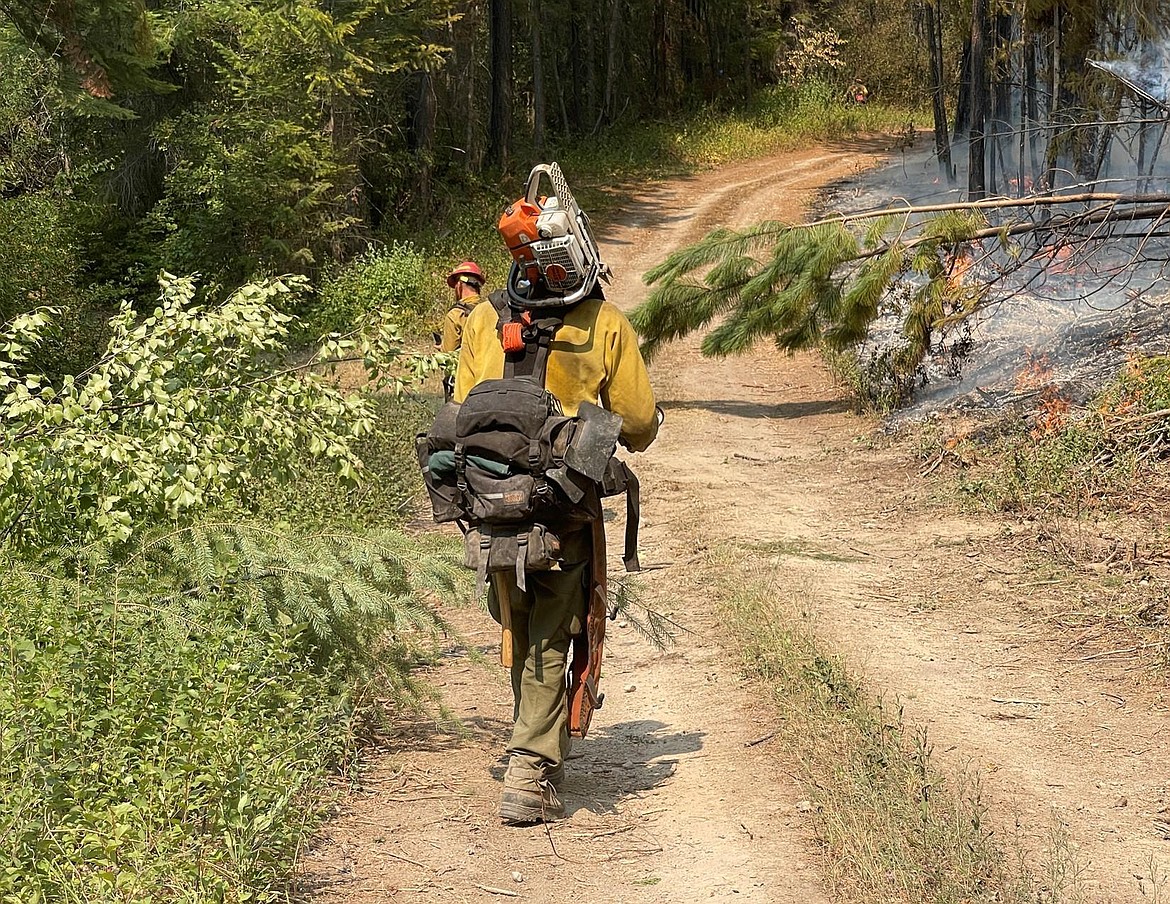Fire season 2021: Almost a million Montana acres burned
The state’s first major winter storm dropped snow on parts of southern Montana early this week, signaling the final act of an active fire season that had prompted Gov. Greg Gianforte to issue a wildfire emergency declaration in July and mobilize hundreds of National Guard troops to assist in suppression efforts.
Nearly 940,000 acres have burned across the state this year, the highest tally since the record-setting 2017 season that prompted lawmakers to revisit their budget. Part of the season’s intensity can be attributed to an expansive drought that stretched statewide and continues to vex Montanans reliant upon a healthy water supply. The 2021 season was also notable for its early start, the late-season fires that made big pushes, and the persistence of poor air quality Montanans faced due to wildfire smoke.
One of the state’s flashier fires, Robertson Draw, started south of Red Lodge before the official start of summer. A Bridger resident who spilled gasoline in dry grass while trying to repair his dirt bike started the fire on June 13. Within 48 hours it had ballooned to a 21,000-acre blaze visible from Red Lodge’s Main Street.
By July 14, Gianforte had issued both drought and wildfire emergency declarations, and on July 22 he called up National Guard troops to help with the state’s wildfire response. A total of 594 National Guard personnel aided the state’s response over the summer, providing support for aviation, security and ground operations.
In late July and early August the season ramped up even more, with the total numbers of acres burned across the state nearly doubling in the span of a week. Big fires burning along coal seams wreaked havoc on the Crow and Northern Cheyenne reservations, prompting evacuations and resulting in the loss of 12 secondary structures. During a particularly hot and windy period July 28-29, the PF Fire made a 16-mile run and went on to burn 66,134 acres of grass, sagebrush and timber east of Hardin. A week and a half later, the Richard Spring and Lame Deer fires started between Colstrip and Lame Deer. The Richard Spring Fire was the state’s largest wildfire this season, topping 170,000 acres.
AROUND THE same time land managers in eastern Montana were trying to tame coal seam fires, the Boulder 2700 Fire on Flathead Lake kept firefighters busy with intense wind and high temperatures that resisted suppression efforts. A quarter of the 54 primary residences that burned across the state this year were casualties of the Boulder 2700 Fire. The total number of structures destroyed across the state, including outbuildings, was 113.
Aside from physical destruction, the effects of wildfire season were felt broadly this summer. Even Montanans who didn’t see a single flame found themselves tangling with smoky and occasionally unhealthy air caused by fires near and far for much of July, August and September.
According to airborne particulate data collected by the U.S. Environmental Protection Agency’s AirNow program, a monitoring station in Billings recorded only one day in all of July when air quality wasn’t categorized as at least moderately poor. A monitoring station in Bozeman recorded only four good air quality days in July, all in the first week of the month.
The last week of July and first week of August were particularly brutal for smoke across much of the state. Bozeman recorded a five-day streak of air quality rated as unhealthy for sensitive groups, and Helena recorded a four-day stretch.
After a couple of key precipitation events calmed things down in late August, a late-season run of fires in the central part of the state including the 12,800-acre South Moccasin Fire near Lewistown and the Crown Mountain Fire west of Augusta served as a reminder that the vast majority of the state is still deep in drought. Both fires started Oct. 4 and are under investigation. The South Moccasin Fire has been fully contained. The Crown Mountain Fire is one of 21 fires still burning as of Oct. 15, but suppression efforts were aided by 2 inches of snow earlier this week — a cold, wet weather event that land managers usually consider a “season-ending event.”
ABOUT HALF — 52% — of the state’s 2,555 wildfires have been deemed human-caused. Twenty-seven percent of the fires were ruled natural starts — started by lightning or in coal seams — and 502 are listed as having unknown or undetermined causes.
According to the governor’s office, the state has spent $47.5 million on fire suppression efforts through Oct 13. That number doesn’t include $9.2 million in federal cost-share reimbursements that have been secured by the state.
“With a long and difficult fire season, our team at the DNRC achieved fantastic results for Montana taxpayers by ensuring our federal partners pay their fair share of costs this fire year,” Gianforte said in an emailed statement. “I strongly commend DNRC officials for being good stewards and protectors of taxpayer dollars.”
The governor also said that with the bulk of wildfire season behind him, he’s shifting his attention to forest management, part of a larger effort to increase the number of forest acres treated with some mix of prescribed burning, thinning and logging.
Amanda Eggert covers environmental issues for Montana Free Press, a nonprofit news organization in Helena.


